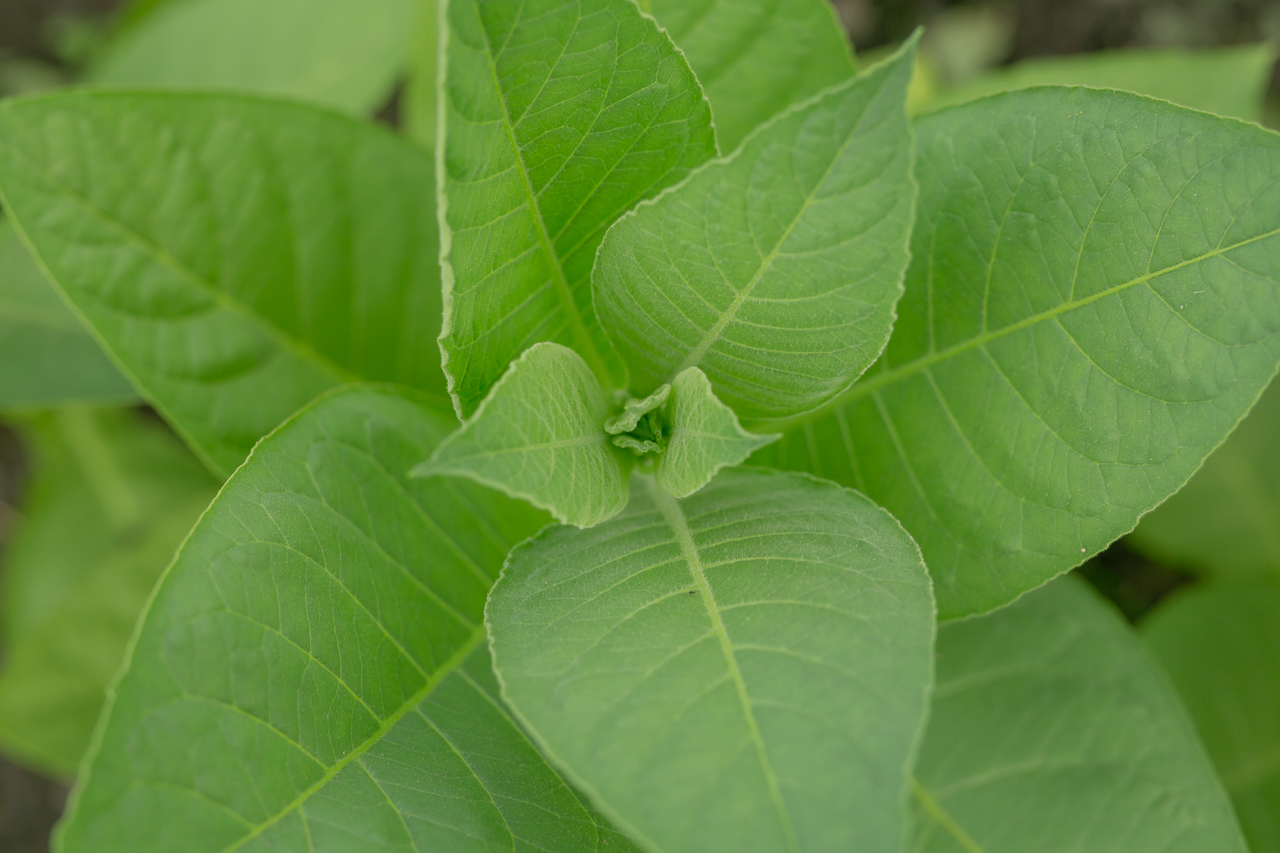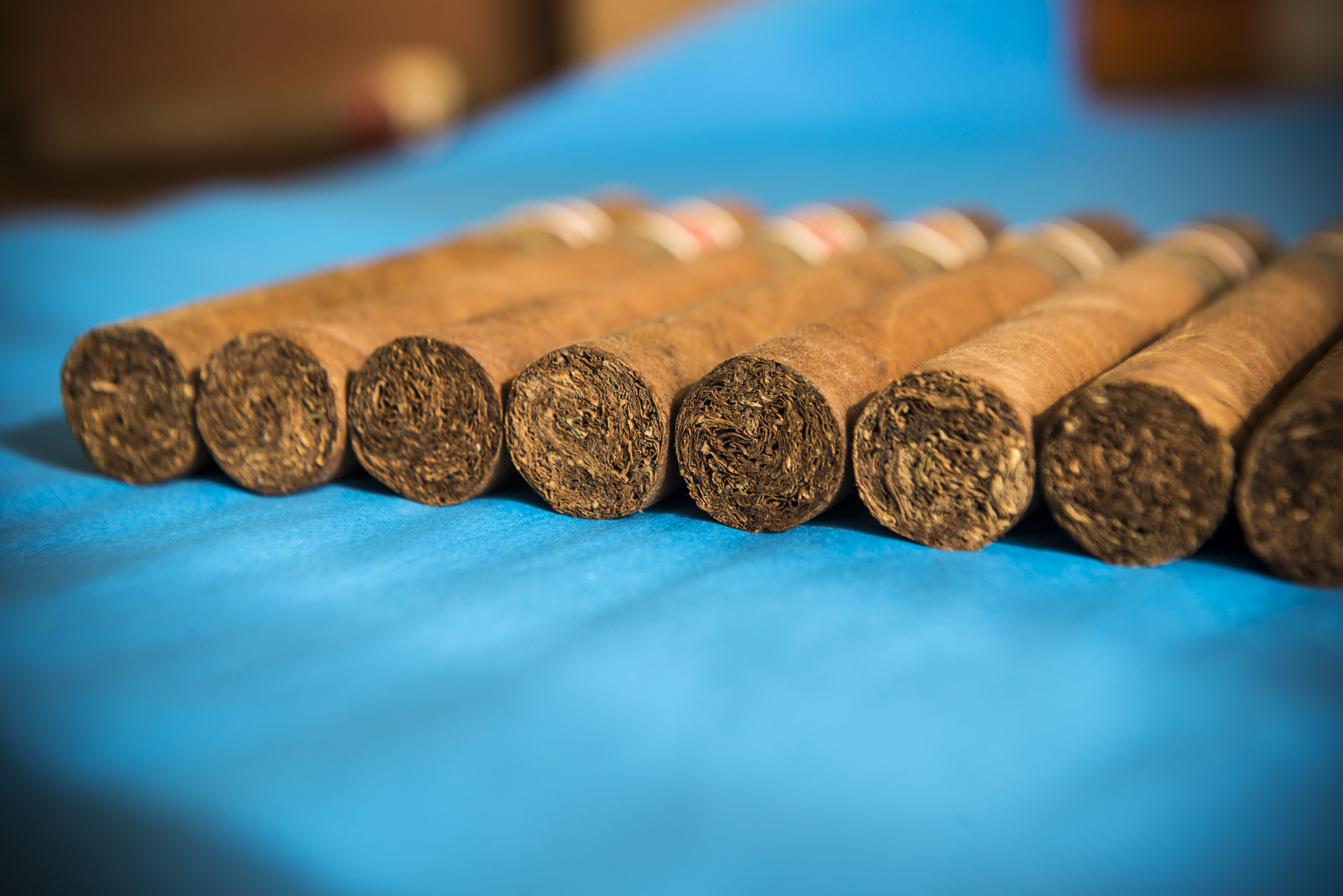The aromas of a cigar are fundamental during a tasting, as these highly contribute to the complexity of sensations that a fine cigar offers us.
We perceive the aromas of a lit cigar mainly through indirect olfaction, which is when we retro-hale, by pushing the smoke from the inside of our mouth up toward the receptors in our nasal cavity.
Such aromas are the heaviest aromatic molecules (least volatile) and produce the “aroma by the mouth”, or flavor. Most of them come from the filler.
The finest aromas can be perceived through direct olfaction from the foot of the lit cigar. Here the wrapper plays a considerable role as the greatest part of the volatile odorous molecules in the smoke from dry distillation comes from the wrapper. We can approach our nose to the lit cigar foot to appreciate such aromas.
The remaining part of the organoleptic qualities of a cigar mainly pertains to taste (sweet, sour, bitter, salty and umami or savory) and tactile perceptions (dry, creamy, spicy). In other words, a #cigar cannot #taste like walnut, it may have a walnut #aroma Click To Tweet. And a #cigar does not need to have a pepper #aroma to be spicy Click To Tweet.
Generally speaking, the aromas of plants and foods are due to the presence of chemicals substances that have two main characteristics:
- they are volatile : they must evaporate to be inhaled through the nose at the top of the nasal cavities and touch the olfactory receptors. In a cigar, we perceive the aromas by the volatile molecules generated by the distillation of oils, resins and waxes that reside on the tobacco leaves
- they are odorous, which means they are able to produce penetrating aromas.
Aromas normally include a large spectrum of very heterogeneous substances of numerous organic compounds belonging to different chemical groups.
Such compounds can vary in quality and quantity depending on a number of factors: tobacco species, ecotype, geography, climate, terroir, biotic factors (presence of insects, for example), growing techniques, fertilizers, harvesting process, curing, fermentation, storage …
Therefore, in a cigar we can find many and varied aromas. Our memory and experience trigger our ability to perceive them and name them. We can use poetry to help us remind us a specific aroma. However, if we want to communicate with other cigar enthusiasts, it is important to adopt a common language. An instrument such as an aromas wheel can be very useful for this purpose.
References:
– “Di Cosa Sa un Sigaro?” – G. Tringali, S. Travali, C, Campisi, P. Rudilosso, Universita’ degli Studi di Catania, CEFIT – 2007
– “The Cigar from Soil to Soul” – Didier Houvenaghel – 2008, Editions du Mysotis
– “The Cigar Sense Aromas Wheel” – Franca Comparetto – 2015
Next steps
If you wish to learn more about cigar tasting, how to fairly evaluate a cigar and how to break down a cigar review, A Cigar Tasting Course might be for you.
You can also log-in or sign-up for free to find the best cigars that suit your unique tastes and learn more about what you like and dislike in a cigar. You will be able to download your copy of our e-book “Cigar Tasting. Beyond the casual, social experience” upon completion of your registration.







